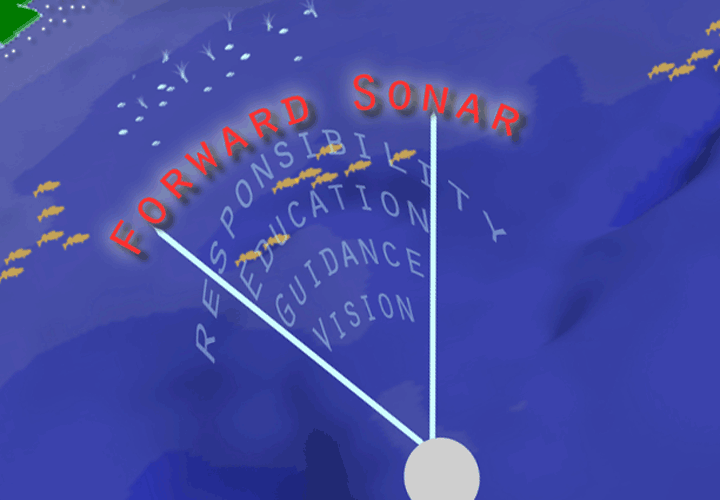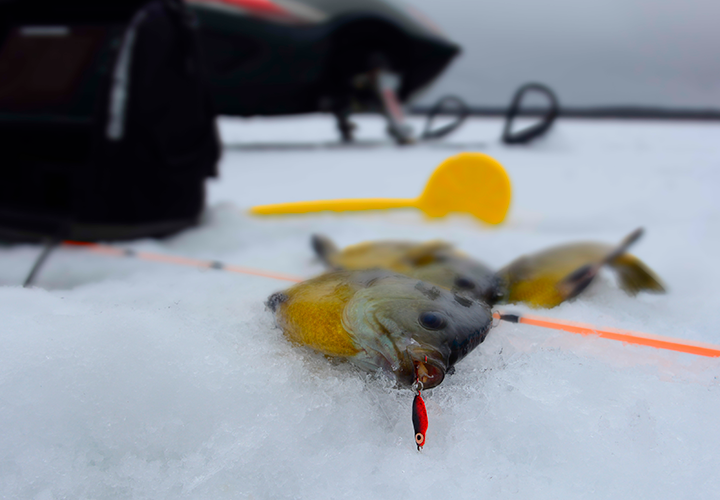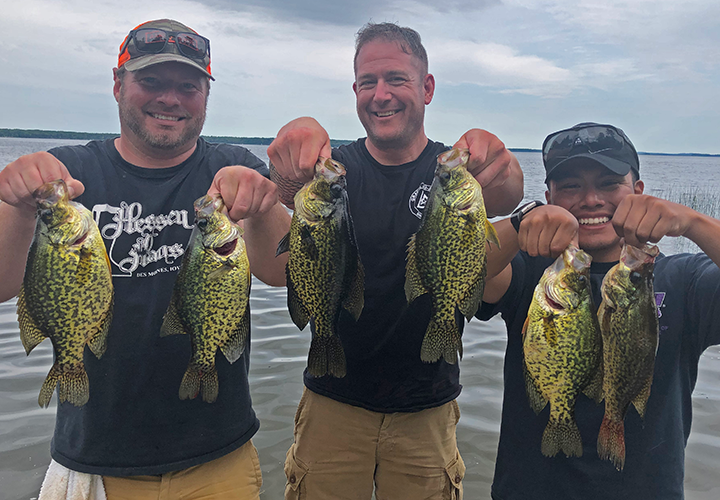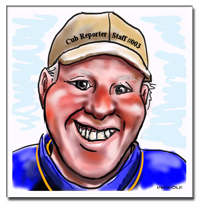
Fishrapper Feature Articles Section: Preserving Quality Panfish in Minnesota Lakes
 Jeff Sundin "Preserving Quality Sunfish and Crappies In Minnesota" February 20, 2023 - Jeff Sundin
Jeff Sundin "Preserving Quality Sunfish and Crappies In Minnesota" February 20, 2023 - Jeff Sundin
 "Hi Jeff — Wanted to congratulate you on your entry into the Minnesota Fishing Hall of Fame. I really can't believe it wasn't sooner. Not only just your guiding fame, but your tireless contribution to the industry and general fishing education for all. I have followed your adventures and have probably read every column since you embraced website technology."
"Hi Jeff — Wanted to congratulate you on your entry into the Minnesota Fishing Hall of Fame. I really can't believe it wasn't sooner. Not only just your guiding fame, but your tireless contribution to the industry and general fishing education for all. I have followed your adventures and have probably read every column since you embraced website technology."
Q) Several of us have been fishing for sunnies and crappies for 5 to 7 years now, often choosing them over walleyes, especially in the winter. We release any sunnies over 10 inches and the large crappies too, only keeping what we might eat soon. We were aware of barotrauma through your early writings, so when we plan on releasing fish, we don't fish in the deeper water.
My real concern now is the forward-facing sonar. Having seen many videos, and observations from acquaintances, these things really don't give the crappies a chance. I don't know what the answer is, but it seems like a sad situation to me.
Lastly, on the sunny front. From what I've read, the bull sunnies of the larger sizes are very important to maintaining a quality and healthy fishery. The DNR has limited the take to 5 fish on many of the lakes with quality sunfish. I do think this is good, but I would think it only favors those who want to harvest fish to take the largest. Seems like having a slot at the upper end and letting folks harvest the small ones in numbers would be a better strategy. Maybe that's something that could be tried on a few selected lakes. I'm sure that has been discussed, so I'd appreciate your thoughts on that. — Jeff Anderes
A) Thank you for your comments, your vote of confidence and the timely questions. With the topics fresh in my mind, I see a natural segway between each one, provided I take them in reverse order.
“High Grading” the process of selecting only the largest fish for harvest was addressed very early in discussions about how best to protect or restore quality size sunfish in Minnesota lakes. The practice is now and has always been practiced by certain sunfish anglers. DNR Fisheries staff were aware of high grading and factored that into the process from the start. They knew that the number of fish that folks are allowed to harvest has no bearing on the behavior, even if an angler could keep 100 fish, they’d still likely attempt to take the 100 largest ones. So, when you think about it, lowering harvest limits doesn’t create a new problem, it just makes us think more about an existing one.
 Combining studies about sunfish biology, angler behavior, data from lakes with existing harvest restrictions and public preference surveys, the numbers were tweaked until they struck the best balance. In lakes where quality size had already declined, a 5 fish bag limit would “FIX” the problem. Lakes that were troubled, but still had reasonable populations of larger sunfish should benefit by a 10 fish harvest limit. Panfish Workgroup member Ed Fussy, who at the time, owned a resort on popular “quality sunfish lake” put it best. Statistically, the 5 fish limit is a “FIXER” and the 10 fish limit is a “Maintainer” and those effects are realized no matter what size fish an angler harvests.
Combining studies about sunfish biology, angler behavior, data from lakes with existing harvest restrictions and public preference surveys, the numbers were tweaked until they struck the best balance. In lakes where quality size had already declined, a 5 fish bag limit would “FIX” the problem. Lakes that were troubled, but still had reasonable populations of larger sunfish should benefit by a 10 fish harvest limit. Panfish Workgroup member Ed Fussy, who at the time, owned a resort on popular “quality sunfish lake” put it best. Statistically, the 5 fish limit is a “FIXER” and the 10 fish limit is a “Maintainer” and those effects are realized no matter what size fish an angler harvests.
Your idea about instituting protected slot restrictions of sunfish was brought up and may sound good at first. The problem is that there aren’t enough lakes in the state that would benefit. Your personal practice of releasing sunfish over 10 inches is admirable, but one that we could only practice on a tiny fraction of Minnesota lakes. So, with “high grading” already factored in, and little in the way of scientific data to support it, the idea never gained traction.
Hypothetically, for a protected slot on sunfish that might work, the size range would have to be smaller. Protecting fish in the 9-to-10-inch range would likely be more realistic. In Minnesota, most sunfish reach the end of their life expectancy before they reach 11 inches in length. So, it could be argued that 10+ inch fish are soon to expire anyway and protecting the 9-to-10-inch fish would clear the way for anglers to keep an occasional 10 inch plus size “trophy”.
Like you, I’ve wondered what we can do to help protect and preserve the quality of crappie fishing lakes in the region. I’ve had some ideas of my own and written several articles about what I believed were sound practices to follow. Crappies though, I am learning, are completely different from sunfish and I think some common misconceptions, including mine, about crappie welfare are on the verge of being debunked.
Following up on another reader question about crappies I turned to Jeff Reed, MN DNR Fisheries Research Specialist and co-chair of the panfish workgroup for guidance. I wrote, “We knew that protecting male sunfish was vital in terms of maintaining quality size structure. What I wonder is whether there are any parallels in terms of protecting male vs female crappies. I realize that during most of the season, it’s difficult to tell which is which, but during the spawning season, it is much easier. Are anglers better advised to select one sex over another during the spring, when sex is obvious?
Reed: “As for your question regarding crappie and males being similar to Bluegill, the answer is no. We do have some research into sex-ratios in angler harvest, I’ll dig that up and pass it along. In short, I don’t recall it making much of a difference. There doesn’t seem to be any kind of relationship between adult abundance and the ability to pull off a big year class either.”
 My interpretation of Reed’s answer is that there’s no evidence that selecting males vs females, or larger vs smaller fish for harvest would be best. The “best” way to preserve quality crappie fishing may well turn out to be simply lowering the number of fish we harvest, regardless of sex or size. Studies looking into crappie are ongoing, but in their early stages. So, it will be fascinating for me to soak up the information as it becomes available.
My interpretation of Reed’s answer is that there’s no evidence that selecting males vs females, or larger vs smaller fish for harvest would be best. The “best” way to preserve quality crappie fishing may well turn out to be simply lowering the number of fish we harvest, regardless of sex or size. Studies looking into crappie are ongoing, but in their early stages. So, it will be fascinating for me to soak up the information as it becomes available.
It may well be that we'll learn that the best safety valve for protecting crappies is simple, voluntary limitations on how many fish we harvest on each outing. For example, the group photo at right is from a few years back. Hungry for a fish fry, the three anglers harvested 2 fish apiece for a meal, but released the other crappies they caught. Granted, it's easier to do this during summer, or in shallow water, where releasing fish is safer, but it's a step in the right direction. They could have put more crappies in the freezer that day. But they recognized that voluntarily limiting their single-day harvest would improve the odds of catching some fish on future outings too. This isn't a bad philoshpy and it's already being practiced by more folks that we realize.
Now getting back to your legitimate concerns about forward-facing sonar. In a related article about panfish on February 10, 2023, I wrote “We can’t legislate good behavior, but we can popularize it." "We know that technology is making it easier for folks to catch fish more consistently; that isn't going to change. Unless we were willing to impose outright bans on fishing with certain technologies or declare entire lakes and water depths off limits to angling, there are no regulations that would improve this situation.”
Well my friend, you are living proof about my assertion about popularizing good behavior is true. How do I know that? You said it yourself, in your opening comments. “We were aware of barotrauma through your early writings, so when we plan on releasing fish, we don't fish in the deeper water.”
Back in about 2017, I began writing about barotrauma and at the time, most anglers had never even thought of it. Gradually, more and more folks thought about the subject and began shying away from fishing deep water. Today, it's common to see anglers apply peer pressure when they observe a 'teachable opportunity". Comments like yours about steering clear of deep water, in certain situations, are common too and now some of “big names” in fishing media are joining the choir. More writers publishing more information about barotrauma leads to more anglers realizing that it's not cool fish in deep water.
This happened because some combination of knowledge, peer pressure and simple human decency has been working its magic. Your story is proof, at least in my mind, that influencing human behavior requires only education and guidance. When provided with clear and accurate information, most of our fellow anglers do not require legislation to "the right thing".
Not everyone agrees with me, but in my mind, legislating our way to better fishing is a losing battle. The issues facing us are complex, angler interests are diverse and DNR enforcement is stretched too thin already. The message for anglers should not be to demonize the technology, or seek to regulate it, NO. My message to anglers would be that now we have it, our goal should be to use it responsibly.
The future of fishing depends not only on how can we use forward-looking sonar. These days, angler ethics fits into every discussion ranging from which bait we choose, to which fish we harvest. If we're really serious about improving and preserving fishing so that our grandchildren can enjoy it, then we better step up our game concerning the mentoring the process. If we gather accurate information, provide education, offer guidance, and promote responsibility, we have a chance to influence our fellow anglers in a positive and meaningful way. Slowly, maybe at first, but somehow simple human decency always catches on; eventually.
This by the way, is why I spend my time volunteering to research and share these pages with you and our fellow anglers. I know that most of us just want to enjoy good fishing, nothing more. The more we learn, the more we share, the more we influence, the better chance we have of seeing better fishing going forward.
You Are Invited To Become A Duly Deputized Fishrapper Cub Reporter
 If you've been waiting for a gold engraved invitation to participate in the daily reports, then stop waiting and consider this your own personal invitation.
If you've been waiting for a gold engraved invitation to participate in the daily reports, then stop waiting and consider this your own personal invitation.
Helping your fellow fishermen and women stay abreast of fishing conditions in your area is good for everybody and it's easier than you think! You don't have to write a book, you don't have to share your secret fishing spots and you don't even have to mention your lake. But even a few words about general trends, seasonal patterns and local weather conditions can really help.
Be like me, become a duly deputized "Cub Reporter", it's good for fishing! Contact Us or if you prefer to be "social", Fishing Reports Minnesota, the Facebook counterpart to this page is open to the public, so you can post your own fishing update or just share a photo of a nice catch.
More Related Articles and Recent Fishing Reports
- Preserving Quality Sunfish and Crappies In Minnesota Sundin 2-20-2023
- MN DNR Panfish Workgroup Where Do We Go From Here? Sundin 2-10-2023
- How Barotrauma Affects Released Fish — What We Don’t Know Might Kill Them Sundin 10-29-2019
- Walleye Responses to Barotrauma Relief Treatments for Catch-and-Release Angling Eberts
- Venting and Descending Provide Equivocal Benefits for Catch-and-Release Survival Eberts
Jeff Sundin is a full time fishing guide, outdoor writer and photographer. Learn about guided fishing trips and more, click >> More About Jeff Sundin.
Current Fishing Reports • Guided Fishing Trips • Current Video • Fishing Articles • Fishing Links • Contact
The Fishrapper, Fishing Blue Books, LLC • 715 Byington Ave • La Prairie, MN 55744 • 218-245-9858
copyright©2023 Fishing Blue Books, LLC All Rights Reserved - last revised 07/16/2023